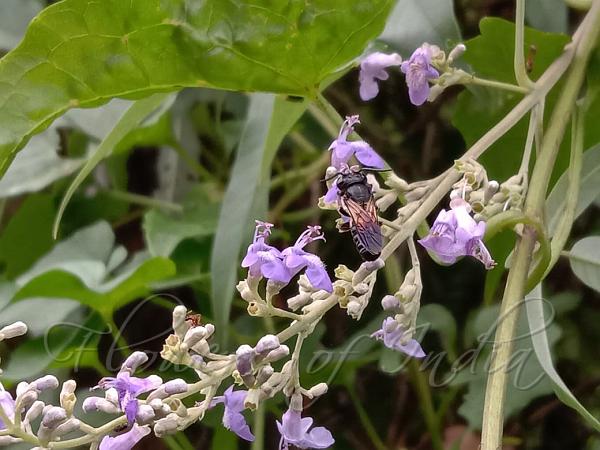|
| Chaste Tree |
|

|

|
|
|
Photo: |
Botanical name: Vitex negundo Family: Verbenaceae (Verbena family)
Chaste tree can be described as a cross between a shrub and a tree with a
single woody stem (trunk). It can grow up to five meters tall. Chaste tree's
distinctive feature are the pointed leaves with 3-5 leaflets. Small, lilac
or violet flowers on new growth from June to September. Flowers are the
smallest of the commonly grown Vitex species. The leaves are used as a
mosquito repellent . leaves are burnt in a heap which proves very useful to
get rid of Mosquitoes.
Medicinal uses: It is an effective herbal medicine with proven
therapeutic value. Chaste tree has been clinically tested to be effective
in the treatment of colds, flu, asthma and pharyngitis. Studies have shown
that it can prevent the body's production of leukotrienes which are
released during an asthma attack. Chaste tree contains Chrysoplenol D, a
substance with anti-histamine properties and muscle relaxant. The leaves,
flowers, seeds and root of Chaste tree can all be used as herbal medicine.
A decoction is made by boiling the parts of the plant and taken orally.
Today, Chaste tree is available in capsule form and syrup for cough.
It is an effective herbal medicine with proven
therapeutic value. Chaste tree has been clinically tested to be effective
in the treatment of colds, flu, asthma and pharyngitis. Studies have shown
that it can prevent the body's production of leukotrienes which are
released during an asthma attack. Chaste tree contains Chrysoplenol D, a
substance with anti-histamine properties and muscle relaxant. The leaves,
flowers, seeds and root of Chaste tree can all be used as herbal medicine.
A decoction is made by boiling the parts of the plant and taken orally.
Today, Chaste tree is available in capsule form and syrup for cough.
Medicinal uses:
 It is an effective herbal medicine with proven
therapeutic value. Chaste tree has been clinically tested to be effective
in the treatment of colds, flu, asthma and pharyngitis. Studies have shown
that it can prevent the body's production of leukotrienes which are
released during an asthma attack. Chaste tree contains Chrysoplenol D, a
substance with anti-histamine properties and muscle relaxant. The leaves,
flowers, seeds and root of Chaste tree can all be used as herbal medicine.
A decoction is made by boiling the parts of the plant and taken orally.
Today, Chaste tree is available in capsule form and syrup for cough.
It is an effective herbal medicine with proven
therapeutic value. Chaste tree has been clinically tested to be effective
in the treatment of colds, flu, asthma and pharyngitis. Studies have shown
that it can prevent the body's production of leukotrienes which are
released during an asthma attack. Chaste tree contains Chrysoplenol D, a
substance with anti-histamine properties and muscle relaxant. The leaves,
flowers, seeds and root of Chaste tree can all be used as herbal medicine.
A decoction is made by boiling the parts of the plant and taken orally.
Today, Chaste tree is available in capsule form and syrup for cough. | Identification credit: K. Karthigeyan | Photographs from Arunachal Pradesh & Maharashtra. |
• Is this flower misidentified? If yes,